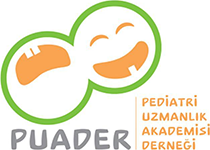A rare neurological presentation of Ebstein-Barr virus: Isolated hypoglossal nerve palsy in a child
Elif Yigit1 , Atilla Ersen2
, Atilla Ersen2 , Nihal Olgac Dundar3
, Nihal Olgac Dundar3 , Nargiz Aliyeva4
, Nargiz Aliyeva4 , Sema Bozkaya Yılmaz4
, Sema Bozkaya Yılmaz4 , Ozgur Oztekin5
, Ozgur Oztekin5 , Pınar Gencpınar3
, Pınar Gencpınar3
1Health Sciences University, Izmir Tepecik Training And Research Hospital, Department Of Pediatrics, Izmir, Türkiye
2Izmir Demokrasi University, Buca Seyfi Demirsoy Training And Research Hospital, Department Of Pediatric Neurology, Izmir, Türkiye
3Izmir Katip Celebi University, Department Of Pediatric Neurology, Izmir, Türkiye
4Health Sciences University, Izmir Tepecik Training And Research Hospital, Department Of Pediatric Neurology, Izmir, Türkiye
5Bakırcay University, Department Of Radiology, Izmir, Türkiye
Keywords: izole palsi, hipoglossal sinir, epstein-barr virus
Abstract
The isolated unilateral hypoglossal nerve palsy (HNP) is an unfamiliar clinical sign since it is rarely involved in isolation without the simultaneous involvement of other cranial nerves. It warrants a detailed history and clinical assessment. Neurologic manifestations are infrequent in infectious mononucleosis and especially hypoglossal nerve involvement is uncommon in daily practice. We report a 13-year-old girl who complained of deviation of the tongue to one side, trouble pronouncing linguals and difficulty chewing and swallowing with serologic evidence of active Epstein-Barr virus (EBV) infection. She developed transient isolated unilateral HNP manifests as parapharyngeal inflammation. Rarity and evaluation of isolated HNP pay particular attention in the pediatric field. Although HNP is an unusual neurologic complication of EBV, it should be considered in the differential diagnosis in the early evaluation of children.
Cite this article as: Yigit E, Ersen A, Olgac Dundar N, Aliyeva N, Bozkaya Yilmaz S, Oztekin O, etal. A rare neurological presentation of Ebstein-Barr virus: Isolated hypoglossal nerve palsy in a child. Pediatr Acad Case Rep. 2023;2(3):66-9.
The parents’ of this patient consent was obtained for this study.
The authors declared no conflicts of interest with respect to authorship and/or publication of the article.
The authors received no financial support for the research and/or publication of this article.

